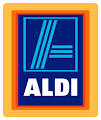It would seem that kudos accrues with brand simplicity.
This means that with simplicity, consumer understanding of the brand increases as does trust.
This particular marketing metric may be worth following through given the recent launch of a PGA marketing campaign around the theme of “Ask your pharmacist” which, given the money invested, is an attempt by the PGA to rebuild the image around brand “Pharmacy”.
Drawing from Australian and UK marketing of “Brand Pharmacy” it seems clear that :
“You have to have a message that matches the experience of patients.”
“Ask your pharmacist” is a simple message that can provide the fulcrum to lever extensions to already recognised services provided within a pharmacy and opens the door to new clinical services.
So top marks to the PGA people who delivered on this project.
Not to diminish their efforts in any way, the “Ask your pharmacist” campaign dates back to the early 1800’s in the UK, and has always been a successful one.
The most memorable in Australian pharmacy history was the 1960’s version “Ask your Family Chemist – He knows!”, and it was so powerful that the doctors asked for its removal!
Since that time the slogan would need to have been changed to reflect the feminisation of pharmacy to “she knows”, but the message has always been adapted for the times, still maintaining its essential theme.
Because the pharmacy industry needs a total restructure, PGA could demonstrate a leadership initiative by calling a forum for all major market groups within pharmacy, even extending invitations to warehouse pharmacy groups to explain the philosophy of the campaign and request that all pharmacy groups advertise within the framework of “Ask your pharmacist”.
Seeking collaboration even to the extent of allowing the gold cross logo to be used for certain campaigns, would help build image faster.
I remember that former photographic giant Kodak built its retail sales volume partly by allowing other retailers to use its brand. Kodak had an official logo which could only be used by Kodak, but it also had another version that could be used by anyone (with approval). This thinking also followed into their manufacturing whereby they pioneered film formats but allowed other manufacturers to use those formats to develop their own competitive products.
Kodak competed against the new brands on quality, all the while receiving licence fees for their patented film formats.
They always did their homework heavily investing in their own research, and they also reflected global brand simplicity at their peak.
Since Aldi first established itself in Australia in 2000, i2P has been recommending its readers to study its business model.
first established itself in Australia in 2000, i2P has been recommending its readers to study its business model.
It carries the theme of simplicity right throughout its organisation.
Aldi has again been named top of the Global Brand Simplicity Index by Siegel+Gale, beating Google and fellow discount retailer Lidl for the spot.
The Aldi business model contains many systems, innovations and policies that could be adapted for pharmacy.
Compiled using feedback from 12,318 consumers in 8 countries (including 1,751 in the UK), the Brand Simplicity Index measures the perceived simplicity or complexity of brands’ products, services, interactions and communications in relation to their industry peers.
Lidl topped the UK list, taking the top spot away from Amazon, who held the position in 2013.
The report revealed that the general decline in traditional supermarket brands’ simplicity scores was largely down to: complicated approaches to online shopping, overpriced premium ranges and decline in own brand quality.
In the UK, Sainsbury’s was the top ranking of the traditional supermarkets, coming in seventh, while Asda ranked ninth. Waitrose came in at 14, while Tesco ranked in at 24.
One of the above metrics, “overpriced premium ranges” has been the downfall of many a pharmacy, and there is probably a lesson in brand quality, given that pharmacy has a large segment of generic medicines that does not necessarily inspire confidence at the consumer end.
Better insights are needed here.
Online shopping is not a major feature of Australian pharmacy at this point, but it should be.
Keeping any online offering should be simple and not necessarily the complex catalogue offering that is seen from some pharmacy groups.
But it should appear and it should promote services over discounted products.
These are simple messages and the PGA is the logical organisation to provide the research for all of pharmacy to harmonise with “Brand Pharmacy”.
